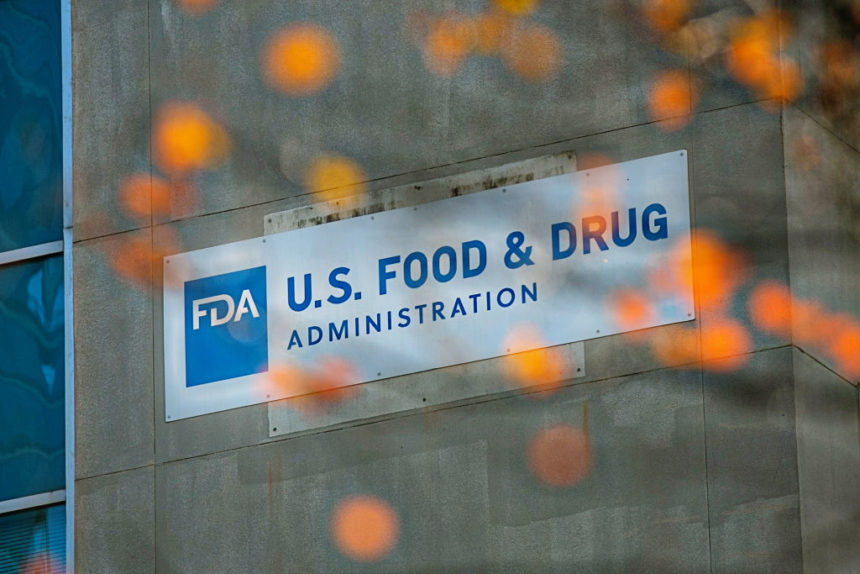The Food and Drug Administration is prioritizing hiring more staff as it transitions out of the COVID-19 public health emergency, agency Chief of Staff Julie Tierney said during a webinar Monday afternoon.
The agency is seeking to fill more than 2,000 vacancies and strengthen its recruitment and retention efforts going forward, she said.
The webinar was hosted by the nonprofit Alliance for a Stronger FDA — which advocates for an increased budget for the agency. The majority of the conversation focused on the FDA’s hiring priorities and challenges, as well as its hybrid work schedule as it transitions into a post-pandemic landscape.
Tierney kicked off the webinar by noting that the FDA’s headcount has grown by about 9% between 2019 and 2022 — increasing from around 17,000 employees to now more than 19,000. The agency is planning on doubling down on that growth by adding another 2,000 employees.
“Our hiring is not complete,” Tierney stressed.
During FDA Commissioner Robert Califf’s first stint at the helm between 2015 and 2017, hiring was a priority for him and “it is again this time,” Tierney said. “Future growth is hard to predict, but we’re steadily growing.”
The focus on hiring comes as reports of the agency being overburdened throughout the pandemic have made their way to the public eye. The weight of addressing COVD-19, in addition to the well-documented infant formula shortage last year, has exposed gaps in the agency’s workflow, highlighting the fact that it has been understaffed and underfunded.
A 2022 report out of the Reagan-Udall Foundation for the FDA pointed out various flaws in the agency’s structuring, from poor communication to leadership gaps, leading the agency to be in “constant turmoil,” particularly regarding its food program.
Tierney did not touch on some of the agency’s recent criticisms but she did emphasize that challenges ahead remain as it seeks to recruit top scientific talent and retain them.
Over the last few years, the average turnover at the agency has been at about 8%. Many staff departures are due to retirement, while other employees are turning to the private sector where they are typically greeted with higher salaries, Tierney said.
“I know personally, anecdotally, [there were many staffers] who hung in through the pandemic,” Tierney said. “We had folks that were very mission-driven and felt they couldn’t leave the agency during that time, and have now started to reflect and think about retirement and other plans.”
She noted that the FDA will have challenges in competing with private industry on a pay basis, so it is instead hoping to improve on how it offers flexibility and hybrid work schedules to incentivize prospects and keep current employees.
“We have challenges recruiting highly trained scientific and medical staff, and we’re regularly competing with an industry that can pay more and provide more flexibility,” Tierney said. “It’s not just in those technical positions that we struggle to compete — we’ve got challenges across the board in terms of recruitment on the food program, in communications, in human resources, and in technical IT.”
She said the FDA will work to streamline hiring efforts, which can currently sometimes take up to six months.
Understaffing and underfunding have also been considered some of the main factors behind the FDA’s backlog of foreign drug manufacturer inspections, an issue that has been exacerbated by the pandemic. In 2022, the FDA inspected only 6% of drug manufacturing sites abroad — a drop from 37% in 2019, according to ProPublica.
One of the overseas plants that the FDA did not inspect, the Global Pharma Healthcare facility in India, was linked to contaminated eye drops that resulted in more than 80 cases of drug-resistant bacterial infections in 2022 and early 2023.
When asked about the staffing issue for foreign inspections, Tierney admitted that working at the FDA’s Office of Regulatory Affairs is a “very demanding occupation” that has been difficult to retain workers in.
“During COVID-19, these were the folks who were on the frontline when no one was vaccinated, going out and doing mission critical inspections,” Tierney said. “We’ll be thinking about what we need to do with our inspector workforce to make sure we’ve got pathways for folks moving forward. I recognize that we’ve got a ways to go on ORA hiring – but it’s a priority.”
Finally, Tierney acknowledged that COVID-19 burnout — and general public health burnout — is a real issue. “We’re not a pencils down at 5-o’clock type of place,” she said.
That being said, the agency will need to figure out how to build up surge capacity to provide backups for staff during moments of public health crises. Having such a “second guard” and rotating staff would be one measure to address burnout, Tierney said.
The agency will also continue to grapple with evolving approaches to work, such as balancing a return to in-person work with flexibility and remote options, “like every other large employer,” Tierney said.
“Throughout the pandemic, we never stopped working,” Tierney said. “The majority of the staff was remote. Now we’re in a place where the majority of staff are reporting to the office on a regular cadence. We’re always checking to see how well the model is working. We have metrics to evaluate it, and will continue measuring productivity, cost, and stakeholder satisfaction – then adjusting [based] on the feedback that we get.”







